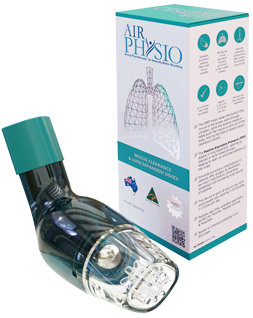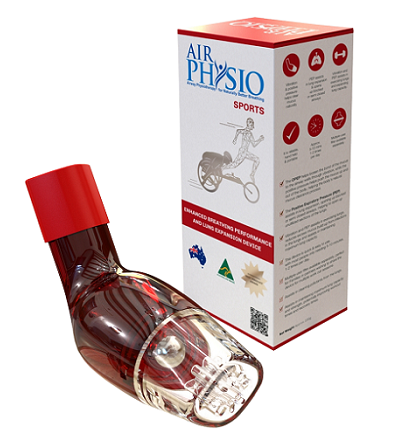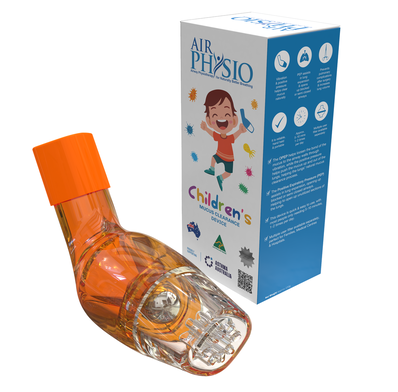Nebulizer vs Ventilator – Understanding the Difference
Science and medicine have introduced various treatments for people facing conditions like asthma and other breathing issues. These treatments that can be given through MDI i.e., metered dose inhaler or a nebulizer, aim at opening the airways while making breathing easier.
However, many people confuse nebulizers with ventilators, as both are used to assist breathing. Do a nebulizer and ventilator work differently? What are they and how are they different? Can they be used interchangeably? Read on to find the answer.
what is a nebulizer?
A nebulizer is a piece of medical equipment that is used in breathing treatments for people suffering from asthma or other respiratory conditions.
With a nebulizer, the liquid medicine turns into a fine mist which makes it easier for the person to inhale through a mouthpiece or a face mask. Taking nebulizer medications this way allows it to reach the lungs or the respiratory system directly. Thus, a nebulizer aims at administering medication to the lungs directly and quickly.
Who Needs a Nebulizer?
As said above, the doctors generally prescribe nebulizers to people suffering from lung disorders like:
- Asthma
- Bronchiectasis
- Cystic fibrosis
- Chronic obstructive pulmonary disease
How Does it Work?
The process of a nebulizer is simple where the liquid medicine is turned into a mist through pressurized air.
As it is easier to inhale a mist rather than using a spray during an asthma attack, a nebulizer is a more convenient option than a pocket inhaler. As your airways become narrow during an asthma attack, it becomes difficult to take deep breaths. This makes aerosol delivery efficiency much greater with a nebulizer when compared to a traditional inhaler.
Another benefit of using a nebulizer is that you have the option of getting both types of asthma medication therapies – short-acting and long-acting, whatever is needed, via aerosol drug delivery. Moreover, you can also take more than one medication at the same time.
However, it is not possible to get nebulizer therapy and the medicine it uses over the counter. You need a proper prescription from your healthcare provider. You may be able to purchase a nebulizer machine with aerosol therapy medication without a prescription.
How to Use It
Once a doctor prescribes a nebulizer to an individual, they can explain how nebulization works, answering any questions. Know that every nebulizer works differently. Read and follow the instructions that your doctor has prescribed very carefully.
Overall, using a nebulizer is not at all complex. The general instructions on how to use it are:
- Make sure your hands are cleaned before using a nebulizer. It’s best to wash it.
- Now, place the compressor near an outlet. Ensure that the nebulizer location surface is flat.
- Check all the parts again to ensure that everything is clean.
- In case you have a pre-mixed medication, all you need to do is place it in the container. When you need to mix it, make sure to take the amount correctly, and then place it in the container.
- Now, connect the tube to the compressor as well as the liquid container.
- Next, attach the mesh nebulizer mask or the mouthpiece to the exhalation valve.
- Once everything is ready, it is recommended to check that the nebulizer is working properly, misting the medication.
- After testing, place the mouthpiece in your mouth and close it. If you’re using a mask, place it over your nose and mouth. Adjust the nebulizer position to the mask doesn’t leave any gaps.
- Now, start breathing slowly. Continue doing this until the medicine is gone. This process will take around five to fifteen minutes.
- Don’t tilt the liquid container. Make sure it stays upright while you’re using the nebulizer.
Nebulizers are an effective asthma treatment, delivering drugs directly to the respiratory tract. It can prove to be a good backup plan to avoid emergency doctor visits.
what is a ventilatore?
While a nebulizer is a breathing therapy, a ventilator, on the other hand, helps the lungs work. It is a lifesaving machine that helps a person to breathe when they are unable to do so on their own.

Who Needs a Ventilator?
A ventilator, also known as a respirator, a breathing machine, or mechanical ventilation, is generally used in hospitals. Majorly, it is used for brief periods to help recover from an illness. Some examples where you need a ventilator are:
During surgery: If your surgery demands general anesthesia or you’re undergoing a serious surgery that prevents spontaneous breathing, a ventilator is used to help you breathe for the time being.
While recovering from surgery: Sometimes, there are instances when people need a ventilator even after surgery as they cannot breathe on their own.
When breathing on your own is difficult: Apart from surgeries, if any individual is facing a health issue that makes breathing difficult, a ventilator comes to the rescue.
Additionally, some people may also need ventilators for a long period and in the worst case, for the rest of their lives depending on the condition, they are in.
How Does it Work?
A medical ventilator works to provide oxygen into your lungs and remove carbon dioxide from your body.
For this, the ventilators will help the patient breathe by forcing the air into their lungs with the help of a breathing tube. One end of this tube is attached to the ventilator and the other end is inserted into the ventilated patients windpipe. Depending on the requirement of the oxygen, you’ll be able to adjust the quantity through a monitor that is connected to the ventilator. So, in case if the patient’s condition deteriorates, this monitor will be set as an alarm to indicate the need for adjustments to the ventilator setting to improve ventilator performance.
Apart from providing oxygen, it also ensures transferring carbon dioxide out of the lungs. If mechanically ventilated patients fail to breathe on their own, they may be at risk of accumulating carbon dioxide in the body. This can further get severe and reach toxic levels. To avoid this scenario, ventilators are used to remove the gas while helping the patient to breathe.
However, it is important to note that the ventilators will not treat or cure your illness. It is simply used as life support.
How to Use It
A ventilator is not used as commonly as nebulizers. It is uncommon for anyone to use a ventilator at home as non-medical people won’t have the necessary skills to operate the machine. However, times changed and today, an increasing number of people can operate a ventilator and assist their loved ones at home just by getting first-hand training and practice.
Still, ventilators are mostly used in the hospitals in the situation when a person is unable to breathe on his own.
The different controls that need to be taken care of while using the ventilator at home include:
- On/Off switch: To turn on the ventilator. Generally, the switch is located at the far left of the bottom row.
- Mode of Ventilation: The doctor will recommend the right mode of ventilation according to the patient’s inspiratory flow and the severity of their medical condition.
- Breath Rate: Again, this is guided by the doctor. It controls how many breaths should be given each minute. Note that it is important to keep a track of the same.
- Tidal Volume: Determined by the doctor, the tidal volume controls how much air should be given in each breath. While learning to operate a ventilator, it is important to understand the tidal volume setting.
- Inspiratory Time: The respiratory therapist generally sets this time. It controls the rate of delivering the set tidal volume during inhalation.
- Oxygen: This will enable you to know the quantity of oxygen a patient receives.
- Sensitivity: The sensitivity feature needs to be set depending on the patient’s breathing capability. Sometimes, it provides 100% of the breathing work and at other times, assists partially. Again, this setting is determined by the respiratory therapist.
- Lock: This control will lock all the settings of the ventilator and will safeguard against children changing the ventilator settings at home.
nebulizer vs ventilator – the takeaway
As per the explanation above, a nebulizer is a piece of medical equipment that turns liquid medicine into a fine mist for lung deposition, so that the patient can take medication directly and quickly. It uses oxygen compressed air to break the medications into small aerosol droplets for albuterol delivery. This means their medication has undergone aerosol generating procedures and can now be inhaled directly with the help of a face mask or mouthpiece.
On the other hand, the ventilator is kind of a life support machine that is used to take a breath if a person is unable to do so on his own. In a normal situation, your lungs inhale and exhale air by taking in oxygen and emitting carbon dioxide. When a patient is unable to do this process naturally, a ventilator comes into the picture. It blows oxygen into the airway through a breathing tube and prevents the patients lungs from collapsing. Generally, ventilators are expensive, but this vital piece of equipment requires specially educated, trained, and experienced people to operate.
So, the answer to the question – can they be used interchangeably, is no. A nebulizer is used to administer the medicine while a ventilator is used to take over the work of breathing for the patients. The latter does not cure any illness.
However, if a patient is receiving treatment via a ventilator, you can incorporate a nebulizer into its ventilator circuit system to deliver the medications in mist forms. Here, the medical team will use suction devices to clear the airway via the breathing tube.
It’s best to follow the doctor’s advice and recommendation while using these two medical devices to ensure that the patient receives the best and the right treatment at the right time.
Average Lung AirPhysio
ENJOY BETTER BREATHING - Use this 100% Drug Free Device - AIRPHYSIO

Recent Posts
Sports AirPhysio
IMPROVE YOUR SPORTING PERFORMANCE - Use this 100% Drug Free Device - AIRPHYSIO

AirPhysio Child
BETTER BREATHING FOR YOUR CHILD - Use this 100% Drug Free Device - AIRPHYSIO

Categories
- asthma (2)
- atelectasis (2)
- bronchiectasis (2)
- copd (3)
- cystic-fibrosis (45)
- featured (10)
- uncategorized (2)


